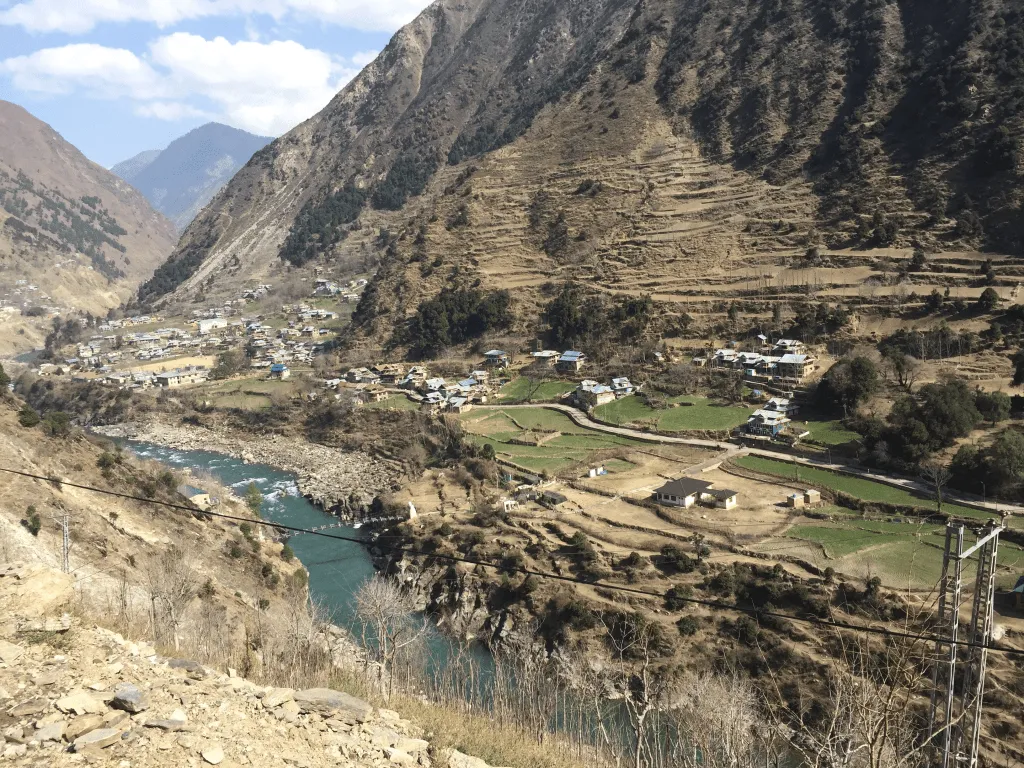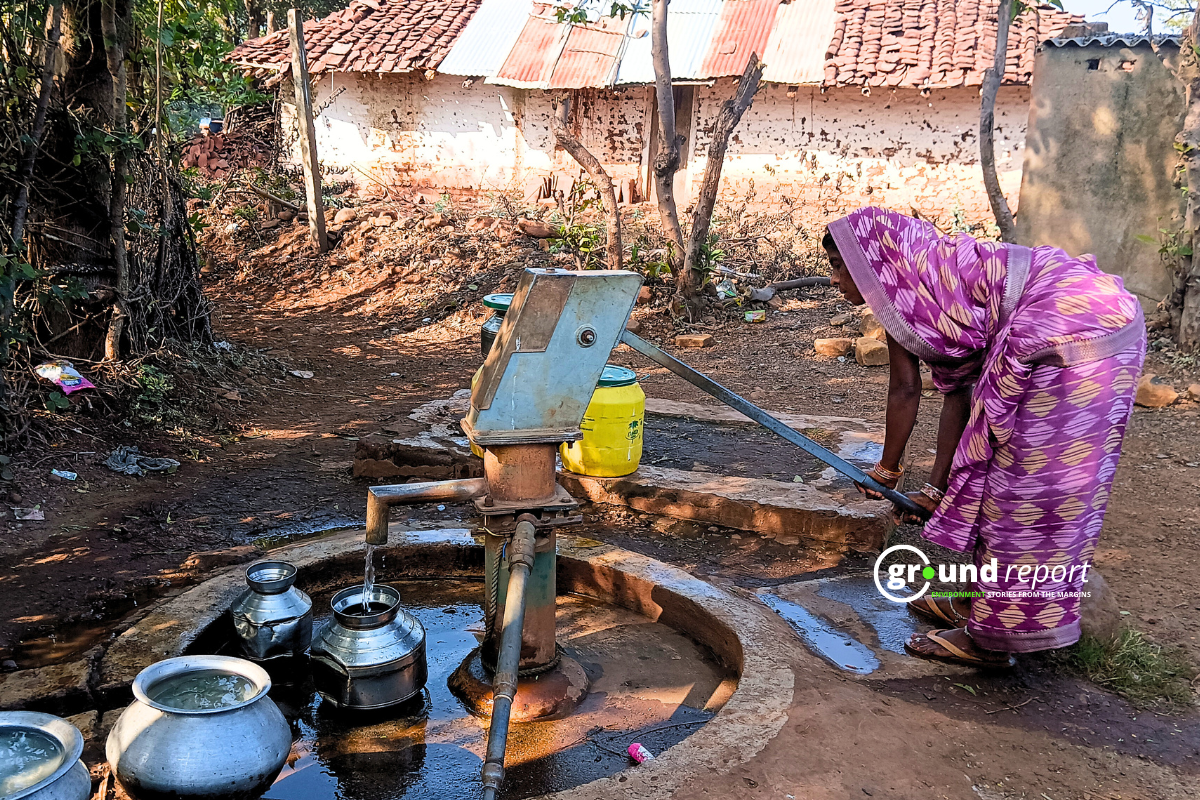The only line that is visible in Teetwal village from Chilyani village of Pakistan Occupied Kashmir (PoK) is the Kishanganga river, which is called Neelum on the other side. The village of Teetwal in the Kupwara district of Kashmir is half in India, while the other half falls in Pakistan. The Pakistani side of this village is now called Chilhana, which is part of the Neelum valley of Muzaffarabad in Pakistani-administrated Kashmir.
Teetwal’s history dates back to the partition of India in 1947, when the region was divided into India and Pakistan. The town found itself divided, with one part under Indian control and the other part becoming part of Pakistani-administered Kashmir. The LoC, established as a de facto border, now runs through the heart of the town, acting as a constant reminder of the political divide.
The people of Teetwal live their lives amid the constant presence of security forces and the reality of cross-border tensions. Despite the difficulties they face, they continue to maintain their cultural and social ties throughout the LoC. Families are separated by the border and often relatives cannot be reunited due to strict regulations and restrictions imposed by both countries. The border crossing is a rare opportunity for you to meet and share precious moments together.
Teetwal village
For the past seven decades, soldiers from the Indian and Pakistani armies hiding in underground bunkers have kept a close watch on both sides of the river. However, the dividends of the Indo-Pakistani peace process achieved through a ceasefire since 2003 at the borders and along the line of control are visible in this picturesque town.
The Teetwal Crossing Bridge, which is right on the LoC and crosses the Kishanganga River, has been closed since 2018 due to rising tensions between India and Pakistan. Since then, anyone who approaches the bridge has been targeted by Pakistani snipers.
First built in 1931, the bridge is a permanent symbol of the separation of families on both sides of the border and the strained relations between the two countries it connects.

From the conversations with the locals I came to know that many families were separated when the LOC was formed in the year 1948. A family living on the India side, has relatives living on the PaK side. Earlier, in order to communicate, they would tie a letter/message with a stone and throw it to the other side of the river.
Crossing points
However, later with things heating up politically, such means of communication turned into a nuisance. And, so it was prohibited. To give some respite to the families of both sides, an understanding was reached. The bridge over the Kishan Ganga River is officially opened, almost twice a month, for family members, who are then allowed to meet their relatives from the other side for a brief period of time.
It was originally built by the British but was destroyed in 1948 when Pakistan tried to occupy Kashmir. However, in 1988, the bridge was jointly rebuilt by India and Pakistan.
The bridge is one of five crossing points along the LoC that India and Pakistan opened in 2005 to allow estranged Kashmiri families to visit each other.

Being the last border town, Teetwal was a fairly quiet and relaxed town. Nestled between huge mountain ranges and located on the banks of the Kishan Ganga River (also called the Neelum River), it hardly showed any signs of modernity.
From conversations with the locals, many families split up when the LOC was formed in the year 1948. A family living on the Indian side has relatives living on the PaK side. Before, to communicate, they would tie a letter/message with a stone and throw it across the river.
However, later, when things heated up politically, such media outlets became a nuisance. And therefore it was forbidden. To give families on both sides a break, an understanding was reached. The Kishan Ganga River Bridge is officially opened, almost twice a month, for family members, who are then allowed to join their relatives on the other side for a short time.
Everything changed after conflict in Kashmir began
However, this was not the case before 1947. Previously, Teetwal was the commercial center where hundreds of shops lined up selling ghee, honey and nuts. Those products would reach Teetwal from the Karnah, Leepa and Neelam valleys. Everything changed after the conflict in Kashmir began in 1947-48.
Above them, on both sides, loom tall, green mountains from where the militaries of nuclear-armed neighbours have intermittently rained down mortars, shells and small arms for decades.

A local from Semari village, which is a stone’s throw from Teetwal and is the last village on the India-Pakistan border, said: “Until 2019, relatives from both sides of Teetwal would get a permit to go up to ‘Meeting Point’ on the bridge that connected two towns under the supervision of the Army.
Those who did not get the permit sat on the narrower bank of the river and chatted endlessly. Except for the rains, the river is silent and one can hear what they say a person from across the river.” However, after the Pulwama attacks, ‘Meeting Point’ permits are not allowed.
There are more than 10,000 families along the Indo-Pakistani border front on both sides, who have very close relationships throughout the LoC.
Keep Reading
- Oder river: Mystery surrounds thousands of fish deaths
- How Airplane contrails can help in reducing global warming?
- Electricity from nuclear fusion, How it is different from existing nuclear energy?
- What Is a Sploot, Why Do Dogs and Cats Do It?
- Number of wildfires forecast to rise by 14% by 2030
You can connect with Ground Report on Facebook, Twitter, Koo App, Instagram, and Whatsapp and Subscribe to our YouTube channel. For suggestions and writeups mail us at GReport2018@gmail.com






